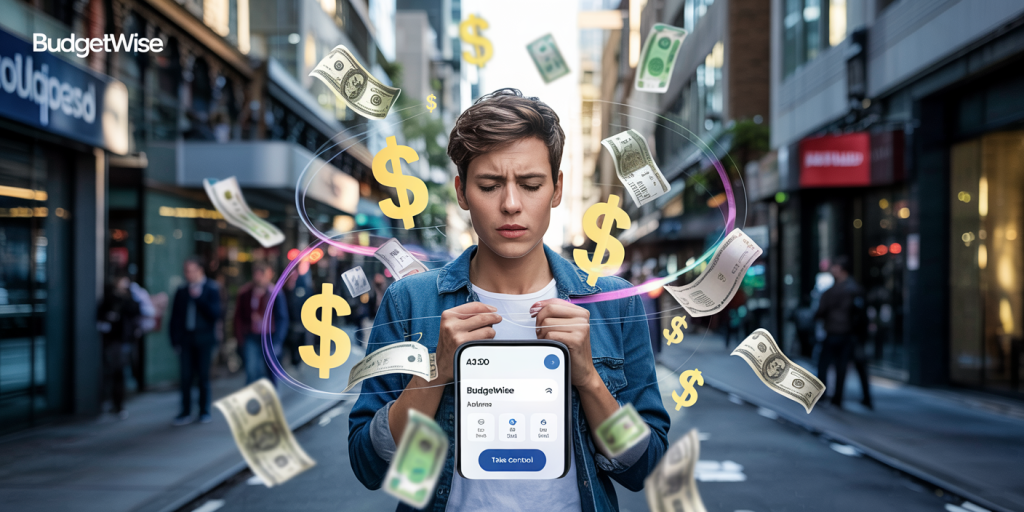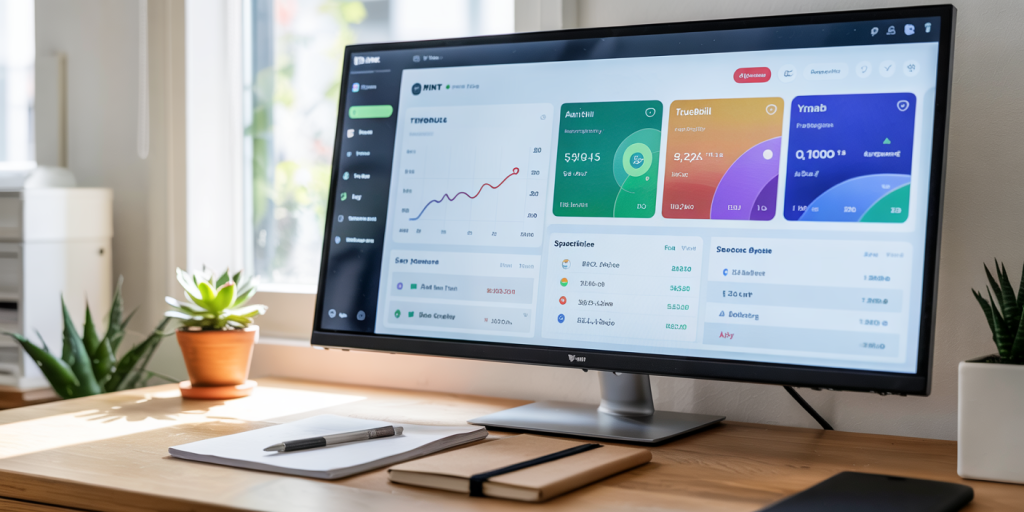Invisible Expenses: Where Does Your Money Disappear Every Month?
Anúncios
Many people struggle with managing their monthly finances despite maintaining a steady income. A significant reason for this discrepancy is the presence of invisible expenses—small, unnoticed costs that accumulate over time and drain your budget silently. This article explores the most common invisible expenses, their impact on your personal finances, and actionable strategies to regain control over your money.

Understanding Invisible Expenses
Anúncios
Invisible expenses are small or recurring costs that typically go unnoticed during budgeting or monthly financial reviews. Unlike large, planned expenditures such as rent or mortgage, these expenses often slip under the radar, leading to unexpected shortfalls and financial stress. The subtlety of these costs means they often escape scrutiny, yet their cumulative effect can distort our financial picture.
For example, snagging a $5 coffee daily might seem negligible, but over a month, that adds up to about $150. Although individually minor, such expenses can pile up and reduce saving potential or debt repayment capacity. According to a survey by Bankrate (2023), 32% of Americans admitted to spending money on “small daily purchases” that negatively impacted their ability to save.
Common Types of Invisible Expenses
Invisible expenses come in various forms. Identifying and categorizing them is the first step to controlling them effectively.
Subscriptions and Memberships
In the digital age, subscription services are everywhere—streaming platforms, software tools, apps, gym memberships, and even niche services like subscription boxes. Many people sign up for several subscriptions, some of which they hardly use. A 2022 survey by Truebill (a budget management app) revealed that on average, Americans waste $237 per month on forgotten or underused subscriptions.
For example, John, a 35-year-old graphic designer, found that he was paying for three streaming services he rarely used and two unused gym memberships, which resulted in a monthly loss of around $60. Canceling unnecessary subscriptions immediately freed up funds that he redirected toward his emergency savings.
Impulse Purchases
Impulse buying is often impulsive and unplanned—snacks, gadgets, clothing, or in-app purchases on your mobile device. Such purchases frequently go untracked because they blend into everyday spending.
Consider the story of Sarah, who underestimated her coffee shop visits until she tracked her expenses. She discovered that her daily treat and occasional pastries cost her roughly $120 monthly. This revelation motivated her to prepare homemade coffee and snacks, leading to significant savings.
Convenience Fees and Service Charges
Service charges for conveniences such as delivery fees, ATM withdrawal fees, or credit card processing fees are frequently overlooked. For instance, ordering food delivery multiple times a week, paying for express shipping, or withdrawing cash from out-of-network ATMs can cumulatively cost between $50 and $100 monthly.

In a practical case from a 2023 personal finance report by NerdWallet, frequent users of food delivery platforms reported an average additional spending of 15-20% on convenience fees compared to cooking at home.
Energy Overuse and Utility Wastage
Invisible expenses aren’t limited to direct spending—utility wastage can inflate your bills silently. Leaving devices on standby, inefficient lighting, or overusing heating and cooling accounts for surprising financial losses.
An energy audit performed by a family of four in Texas showed their electricity bills dropped by 15% after switching to LED bulbs and smart thermostats. The savings translated to over $200 annually, illustrating how behavioral changes influence invisible expenses.
The Psychological Impact of Invisible Expenses
Invisible expenses don’t just impact finances; they affect psychological well-being as well. Constantly wondering where money goes can lead to stress, anxiety, and even poor spending decisions.
The Illusion of Small Costs
The psychology behind invisible expenses is rooted in how perception shapes behavior. The “pain of paying,” a concept discussed in behavioral economics, is often less intense for small transactions. This diminished discomfort leads individuals to rationalize minor expenses as affordable or justifiable.
For instance, people are more likely to spend without much thought on small purchases like a $2 snack than a $50 restaurant meal. Over time, this rationalization blindsides budgets, as the cumulative effect goes unnoticed until financial pressure mounts.
Budget Fatigue and Reduced Saving Motivation
When expenses accumulate invisibly, people may feel their budgeting efforts are futile—sparking “budget fatigue.” This psychological response often causes individuals to abandon budgets, further perpetuating the cycle of untracked spending.
In a study published by the Journal of Consumer Research (2022), participants who tracked their daily spending showed a 30% increase in saving compared to those who only reviewed monthly summaries. It emphasizes the importance of transparency for motivation.
Tools and Strategies to Manage Invisible Expenses
Controlling invisible expenses requires a combination of awareness, tracking, and proactive financial habits. Here are effective strategies backed by practical examples.
Expense Tracking and Budgeting Apps
Digital tools provide insights into spending patterns often missed by manual tracking. Apps like Mint, You Need A Budget (YNAB), and Truebill analyze your transactions, flag recurring expenses, and visualize spending trends.

For example, Greg, a software engineer, used Mint to identify a $12 monthly forgotten subscription to an online course platform. Canceling the service saved him $144 annually, highlighting the power of automated tracking.
Regular Subscription Audits
Setting a quarterly reminder to review bank statements and subscription services can prevent money leaks. Create a simple spreadsheet or document listing all subscriptions, their monthly cost, and frequency of use.
According to a 2023 Consumer Reports survey, 40% of subscription cancellations followed such periodic evaluations. This habit ensures only services that provide value remain active.
Mindful Spending Practices
Consciously evaluating each purchase, especially small ones, alters spending behavior. Techniques like the 24-hour rule—waiting 24 hours before making a non-essential purchase—help curb impulse buying.
Mary, a working mother, adopted this habit for clothing and gadgets. She reports that waiting eliminated at least 70% of unnecessary purchases, boosting her monthly savings by $80.
Reducing Convenience Fees
Alternatives like meal prepping, using in-network ATMs, and opting for standard shipping can reduce service charges substantially. Planning grocery runs to avoid last-minute delivery orders also lowers expenses.
A comparative table below illustrates the typical cost difference between regular grocery shopping and frequent delivery services:
| Expense Type | Average Monthly Cost (Regular Grocery Shopping) | Average Monthly Cost (Frequent Delivery) | Difference |
|---|---|---|---|
| Groceries | $400 | $460 | +$60 |
| Convenience Fees | $0 | $30 | +$30 |
| Tips and Service Fees | $0 | $25 | +$25 |
| Total | $400 | $515 | +$115 |
This example underscores how convenience often comes at a premium that adds up invisibly but significantly.
Hidden Costs and Long-Term Financial Health
Invisible expenses are not just short-term annoyances; they can have a profound impact on long-term financial goals such as retirement planning, debt repayment, and wealth building.
Impact on Debt and Credit Health
Repeated unnoticed expenses can delay paying down high-interest debt. Consider that saving an average of $150 per month by cutting invisible costs allows for an additional $1,800 annually to pay off credit cards or loans faster, reducing interest expenses significantly.
For example, Jane, who paid off $10,000 in credit card debt in 18 months, attributed her accelerated payoff to eliminating recurring “invisible” costs, enabling her to direct more funds towards principal payments.
Opportunity Cost of Missed Investments
Beyond debt, invisible expenses reduce money that could be invested for compound growth. Assuming a modest 7% annual return through diversified investments, an extra $100 saved monthly turns into over $23,000 in 10 years.
This opportunity cost magnifies the significance of controlling invisible expenses, showing that small savings today compound into substantial wealth tomorrow.
Future Perspectives: Technology and Awareness Trends
The battle against invisible expenses is evolving, boosted by technological innovations and growing consumer awareness.
Artificial Intelligence and Automated Budgeters
Emerging financial technology incorporates AI to predict and categorize expenses automatically, sending proactive alerts on potential invisible expenses. Tools like Cleo and Emma utilize machine learning to generate personalized reports and actionable advice.
In the next five years, we can expect smoother integration of banking, investment, and budgeting platforms into single ecosystems, improving spending visibility and reducing the blind spots consumers face today.
Growing Consumer Consciousness
With increasing public focus on personal finance literacy, more individuals embrace transparency in money management. Campaigns by financial institutions and non-profits emphasize tracking and mindfulness, reducing stigma around financial education.
Schools and workplaces are also adopting financial wellness programs, equipping participants with tools to identify and manage invisible expenses effectively.
Sustainable Spending Trends
A growing segment of consumers is prioritizing sustainable, minimalistic spending, which naturally curbs invisible expenses. The movement towards “less but better” purchasing patterns aligns with financial wellness by limiting impulsive and unnecessary spending.
Brands offering more transparent pricing and subscription management tools respond to this trend, fostering an environment where invisible expenses are minimized by design.
—
Invisible expenses are a silent financial drain affecting many households worldwide. By recognizing the categories these hidden costs fall into, understanding their psychological impact, and adopting practical management tools, individuals can reclaim control over their budgets. Looking ahead, the convergence of technology and growing financial awareness promises an era where invisibility in expenses becomes a thing of the past—enabling better financial health and security for everyone.
